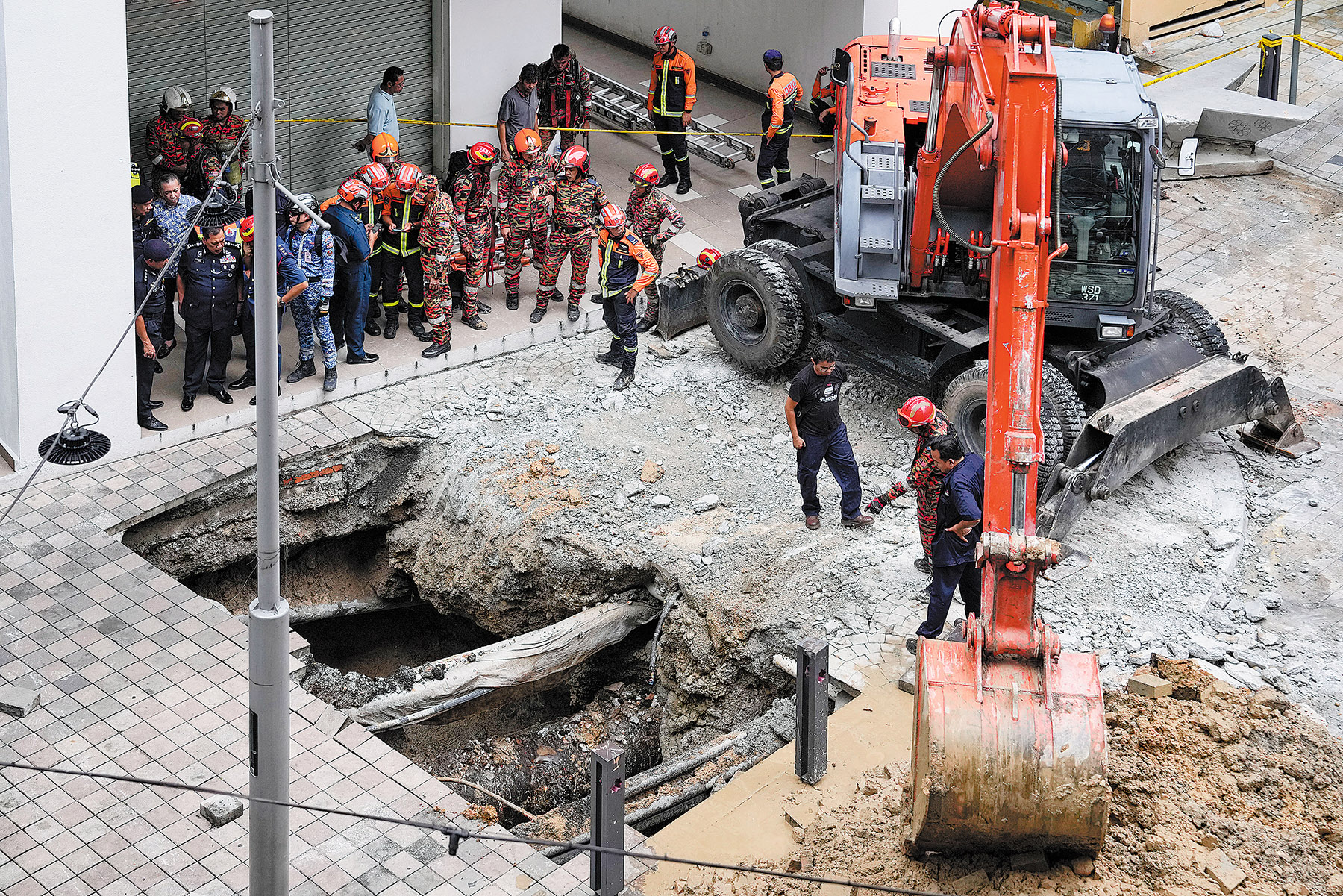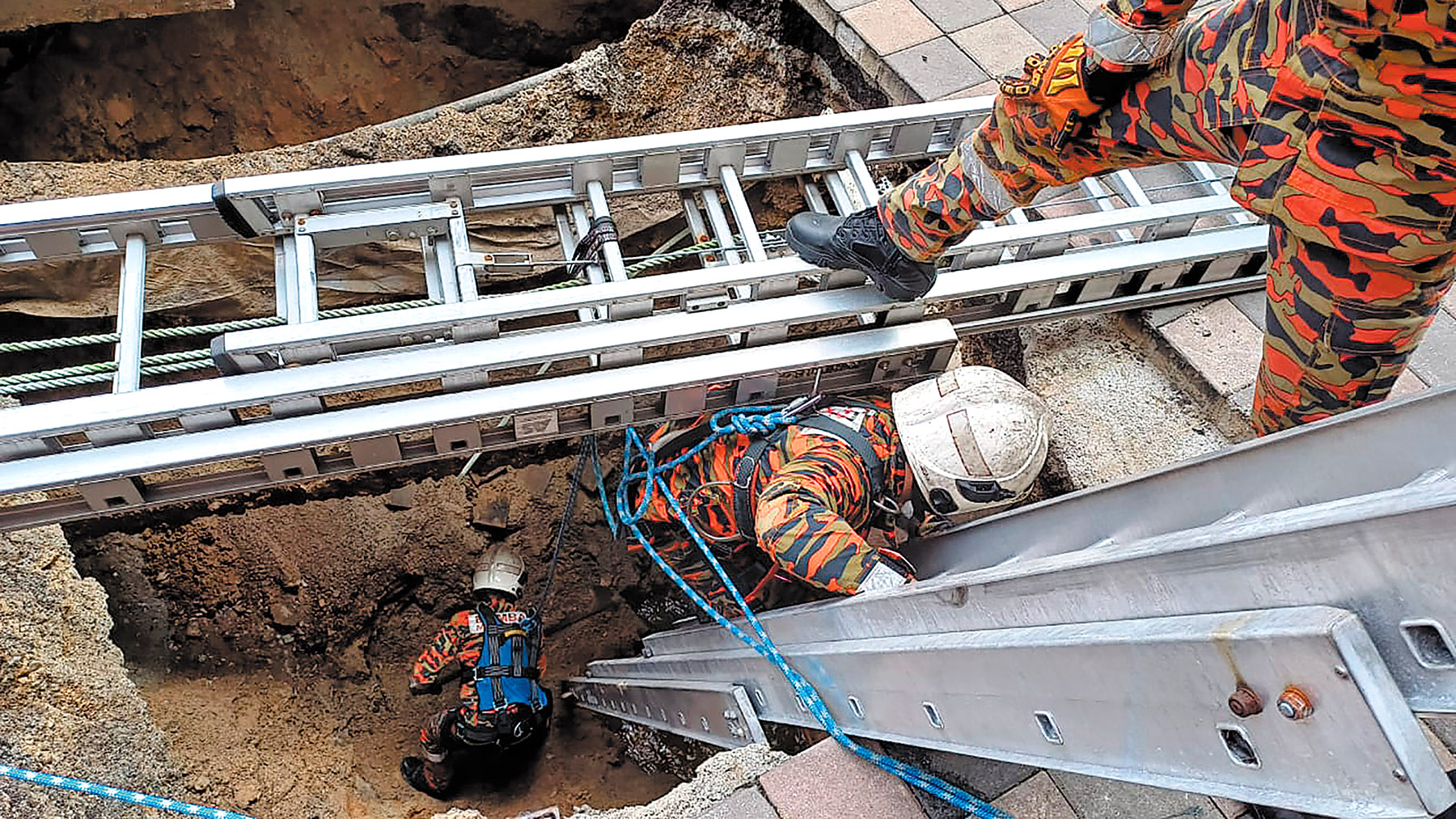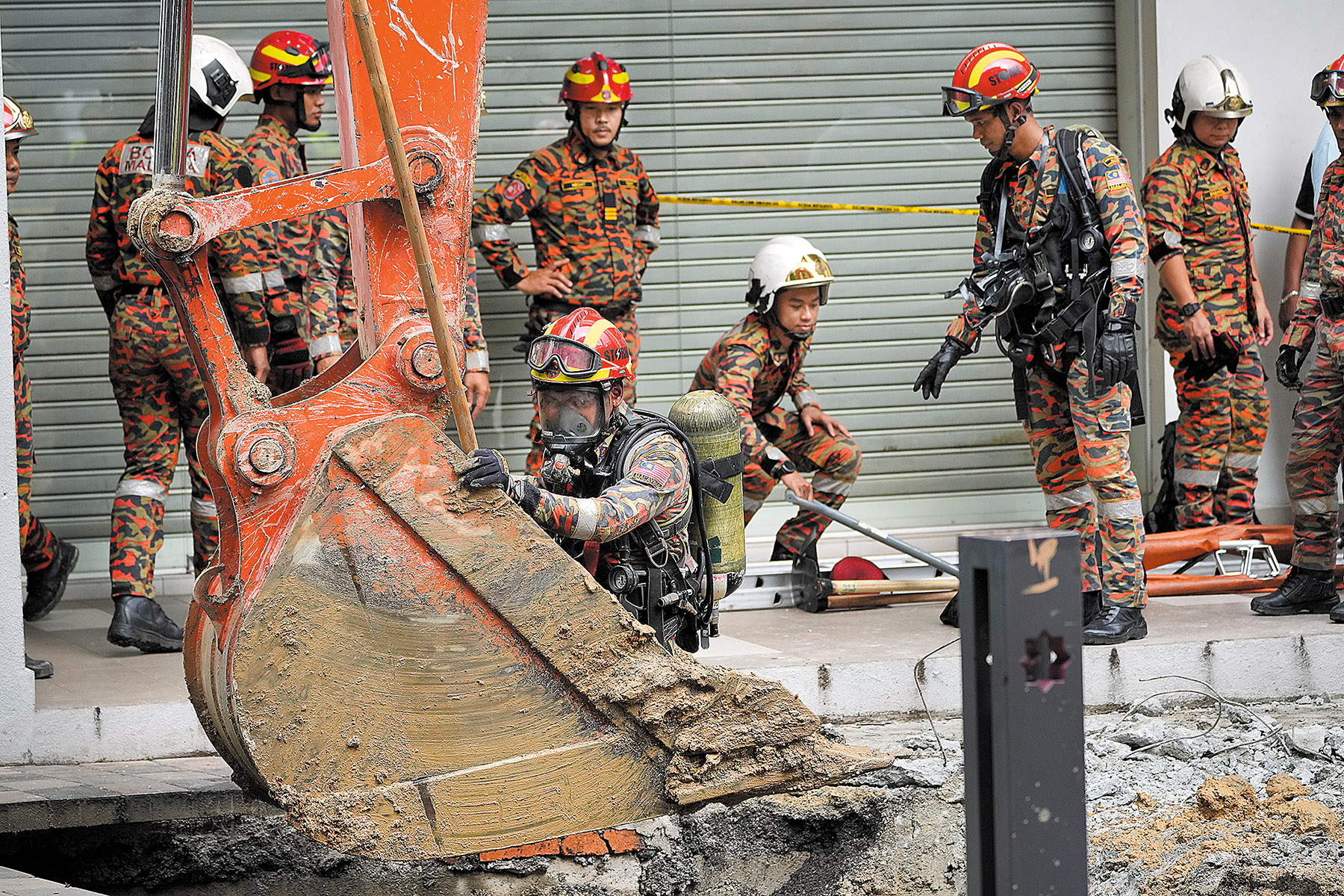Kuala Lumpur underground mapping demanded after sinkhole incident

Editor's note: In this weekly feature China Daily gives voice to Asia and its people. The stories presented come mainly from the Asia News Network (ANN), of which China Daily is among its 20 leading titles.
Kuala Lumpur should establish a comprehensive underground mapping system for city infrastructure and utilities, if it does not already have one, said Malaysian experts and politicians.
President of the Institution of Engineers Malaysia, or IEM, Jeffrey Chiang Choong Luin, said the recent sinkhole that swallowed 48-year-old Indian tourist Vijaya Lakshmi in Jalan Masjid India, or "Little India", in the city center of Kuala Lumpur, highlighted urgent need for action.
Heavy rain that deluged Kuala Lumpur in the past weeks meant there was a lot of fast-moving water in the sinkhole and sewer, complicating the search efforts.
The Malaysian authorities said a portion of a large concrete sewer at the bottom of the sinkhole was broken, and the victim might have fallen in and been swept away.
A second sinkhole appeared in Jalan Masjid India on Aug 28, about 50 meters from the first one on Aug 23, causing further alarm.
"This is an opportunity to leverage technology and map out the city's intricate underground infrastructure. With the right resources and determination, future disasters can be prevented," Chiang told The Star.
"Furthermore, IEM is willing to assist in this crucial endeavor, should the DBKL (Kuala Lumpur City Hall) be open to collaboration," he added.

IEM, which has over 50,000 members, had earlier issued a statement regarding the Jalan Masjid India sinkhole incident, urging DBKL to conduct a thorough investigation and offering its expertise to support the effort.
The organization called for more stringent safety checks by qualified professional engineers in the design, construction and supervision of critical infrastructure to prevent a recurrence.
In 2020, The Star reported that then Kuala Lumpur mayor Datuk Nor Hisham Ahmad Dahlan had ordered an interagency study with utility companies to map out the extensive network of underground cables and pipes in the capital city, prompted by the increasing number of sinkholes.
Nor Hisham said that while Kuala Lumpur had developed a basic framework for addressing such issues, significant challenges remained due to aging infrastructure, some of which were over 50 years old.
In a recent interview, Nor Hisham stressed the need for comprehensive underground mapping for Kuala Lumpur as well as good collaboration between agencies.
During his tenure, Nor Hisham said he had difficulties obtaining accurate underground mapping due to lack of cooperation from utility companies.
"One of the significant challenges we faced was getting utility companies on board with the mapping process.
"Many were reluctant to share their data, which made it difficult to create a comprehensive and reliable map of the underground infrastructure," he said.
Nor Hisham also believed that DBKL's current data might not be accurate as records could be outdated and unreliable.
This, he said, could lead to unforeseen delays in construction projects and pose hazards for road users and contractors.

Members of the Parliament of Malaysia, or MPs, suggested implementing a mapping system to safeguard residents in vulnerable areas.
Cheras MP Tan Kok Wai said the DBKL should reveal its early findings on the incident and address concerns whether Kuala Lumpur is safe. He agreed that there should be some form of mapping system to alert the public of areas that are prone to sinkholes.
Tan suggested revealing whether the Jalan Masjid India incident had issues related to piping, sewage or limestone cavities under the roads.
"DBKL should release a preliminary report immediately. We have different parties, professionals and even laymen discussing it, and this could cause unnecessary concern," he added.
Bukit Bintang MP Fong Kui Lun said DBKL should explain the reason behind the sinkhole. However, it must be done carefully not to cause unnecessary panic or fear.
ALSO READ: Heat wave drains Malaysian water supply
"We need to inspect the whole area as the safety of the public comes first. The authorities must conduct a review on all the areas, even those underground.
"They can use the latest technology or machines to test the underground before coming up with the mapping," he said.
Wangsa Maju MP Zahir Hassan said DBKL should conduct public engagement from time to time and raise awareness on the warning signs for sinkholes.
"We cannot assume, for example, if there are small cracks on the pavement or road on the ground surface, there isn't a huge hole underneath.
"The public needs to know what they can or how to report if they see any signs of sinkholes. This will be a better solution to address the issue," Zahir said.


